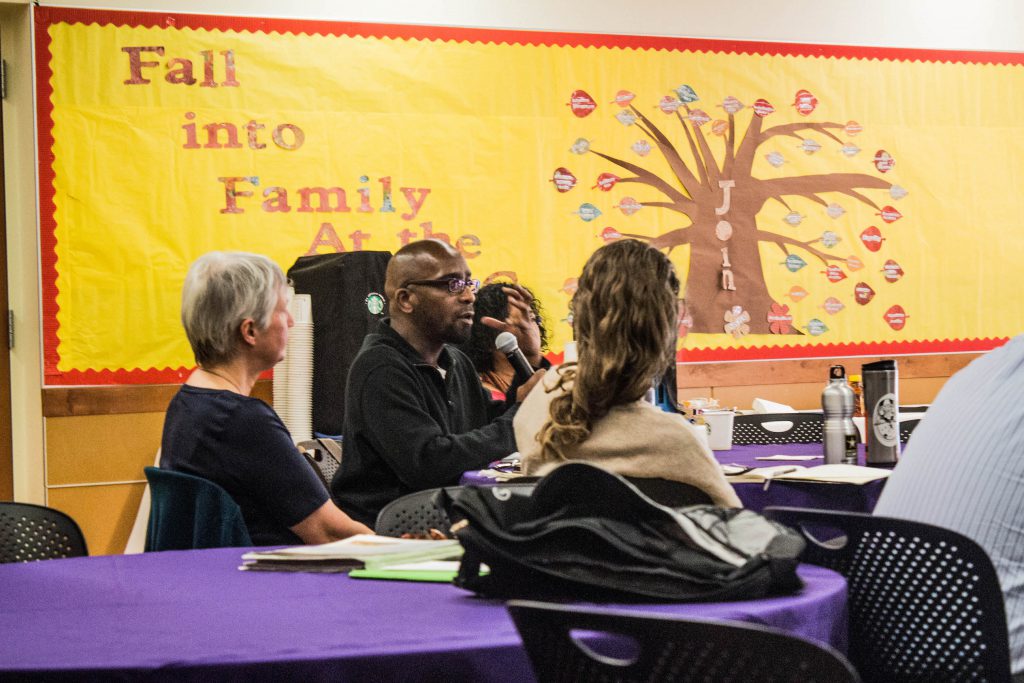In December, we wrapped up the first year of the AAAS Community Engagement Fellows Program (CEFP), funded by the Alfred P. Sloan Foundation. The first cohort of Fellows was made up of 17 scientific community managers working with a diverse range of scientific communities. We’ll be recruiting for Cohort Two later this year for a start date of January 2019.
Meanwhile, we’re continuing to share reflections from the 2017 Fellows on the Trellis blog. In today’s post, Jen Davison shares some reflections about working with co-located collaborators. You can catch up on all posts by the Fellows here.
Posted by Jennifer Davison, Program Manager at Urban@UW
Urban@UW, the program I support at University of Washington, is an ambitious initiative that develops and supports cross-disciplinary and cross-sector collaboration to address tough challenges faced by cities around the world: climate change mitigation and adaptation, homelessness and affordable housing, transportation equity, and more. The research that the program fosters is intended to be applicable to other cities, regions and countries. Yet, the collaborations that the community engages in are by and large co-located in the Puget Sound region, if not right here on the campus of University of Washington. As community manager for this young initiative, I’ve learned to make the most of its place-based nature.
Local science communities share a few unique aspects. First and foremost, scholars in these communities can regularly connect in person. This is huge. Meeting and working together in person often generates trust much more quickly, and in-person collaboration can be more productive. Communication is easier, impromptu shifts in direction can happen more smoothly, and unplanned interactions can serve to strengthen and progress the ideas and efforts in ways that just aren’t as easy across the Internet. (Bonus: meetings are easier to schedule!)
Co-located people also already have “common ground”—literally—which serves to lubricate and expedite collaboration. Most of Urban@UW’s community members are relatively familiar with shared regional, municipal and institutional contexts that inform the substance and the process of their work. This also makes it easier for community members to find common ground regarding both local and non-local opportunities and challenges, as they have access to many of the same sources of information, such as campus news and announcements.
On the other hand, when people live and work in the same place they might take the advantages of their proximity for granted, and could feel there’s less urgency to move the conversation forward. Further, community members might have had bad experiences or previous disagreements—either at work or outside of it, or they experience dysfunctional work dynamics involving each other. This is harder to step away from than when collaborating with a more distant team with less relation to your day-to-day context. Additionally, a local lens might become blinders, where community members fail to consider new ideas or approaches because “it’s different here.”
As a community manager, I’ve tried to identify strategies that make the most of the benefits of the place-based nature of my community while ameliorating the potential challenges.
Managing a co-located community is fun, because I get to take advantage of that well-known ingredient for collaboration success: in-person interaction. However, I try to avoid the opposite side of the coin, meeting fatigue, by making sure that meetings are only held when they add value to the collaboration—not just because they are scheduled. Clear expectations, an agenda, supporting information and, sometimes, facilitation with quick and useful follow-up are key.

Image credit: Urban@UW/University of Washington
With easy access to in-person meetings, I see online engagement as a tool to move the agenda forward and to keep trust high. It’s useful to remind collaborators that, while their conversation might have started and can be punctuated by in-person meetings, online check-ins and sharing can serve as useful reminders of deadlines and tasks. Moreover, it can remind the community between meetings that others on the team still share their interest in moving the project forward.
Co-located communities can always benefit from outside perspectives, whether a neighboring university or across the world. And, as our goals are both to inform local policy and practice and to contribute to the global knowledge base, I try to make those opportunities available as much as possible. We bring in scholars from all over the world, and we routinely converse with community stakeholders about what they’re working on, what they’re stymied by, and what they’re excited about. It’s easy to find comfort in known processes and ideas. But the person who gets off the plane is not only a possible source of that next great advance—they’re often listened to with more attention because they’re outsiders.
Global or regional research communities can be powerful for scaling up insights and disseminating them across contexts. But place-based collaborations have a unique power in the ease of the human connection that may allow for a quicker path to impact. How do you make the most of the benefits that co-located communities present, while ensuring that broader opportunities are considered and incorporated?